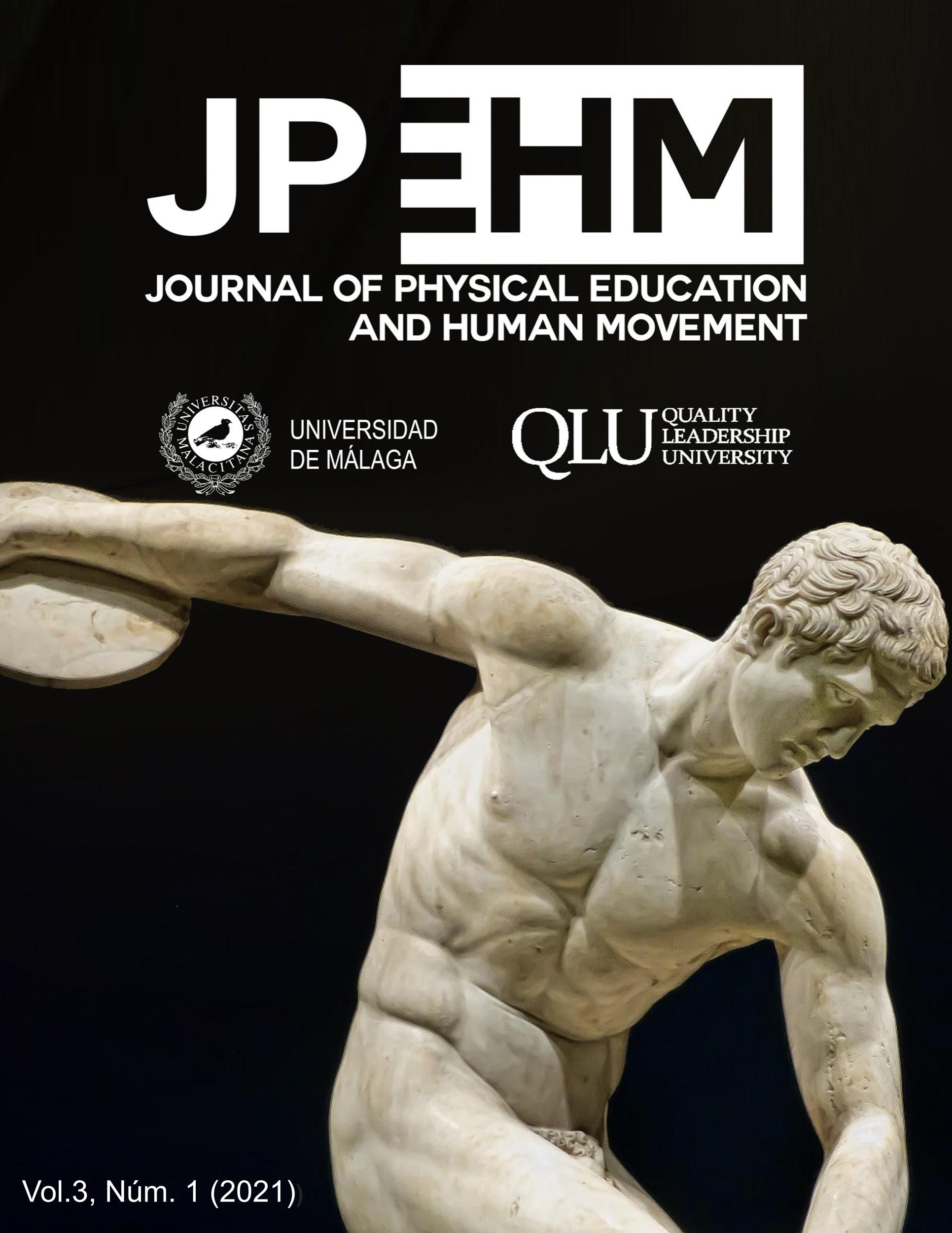Team category and gender differences of resilience among high-level volleyball players
DOI:
https://doi.org/10.24310/JPEHMjpehmjpehm.v3i110436Keywords:
resilience, High Level Volleyball, Volleyball National Team, sex differences, self-efficacyAbstract
Introduction. The objective of this study was to investigate he difference in resilience level of high-level volleyball players of different team categories. Methods. Ninety-eight volleyball players (50 males and 48 females) of the national team U21, Pre-League and Second Division A2 teams participated in the study and their perceptions were examined using the Self Evaluation Resilience test. Statistical analysis included the use of SPSS 21.0 including t-test for independent samples, and one-way ANOVA with post hoc Bonferroni adjustment test. Results showed statistically significant differences between male and female volleyball players in ‘‘orientation on solution and aims’’’ and ‘‘self-efficacy’’ variables and between players of different team categories concerning ‘‘orientation on solution and aims’’, ‘‘healthy lifestyle’’ and ‘‘self-efficacy’’. Future research should investigate whether coaching behavior affects the resilience level of the players in different categories.
Downloads
Metrics
References
Belem, I. C., Caruzzo, N. M., Nascimento Junior, J.R.A.D., Vieira, J.L.L., Vieira, L.F. (2014). Impact of coping strategies on resilience of elite beach volleyball athletes, Revista Brasileira de Cineantropometria & Desempenho Humano, 16(4) 447-455. https://doi.org/10.5007/1980-0037.2014v16n4p447
Bonanno, G. A. (2004). Loss, trauma and human resilience: Have we underestimated the human capacity to thrive after extremely aversive events? American Psychologist, 59(1), 20-28.
García Secades, X., Molinero, O., Ruíz Barquín, R., Salguero, A., De La Vega, R., Márquez, S. (2017). Resilience and recovery-stress in competitive athletes. Cuadernos de Psicología del Deporte, 17 (2), 73-80.
Gould, D., Dieffenbach, K., Moffett, A. (2002). Psychological characteristics and their development in Olympic champions. Journal of Applied Sport Psychology, 14(3), 172-204.
Gucciardi, D. F., Jackson, B., Coulter, T. J., Mallett, C. J. (2011). The Connor-Davidson Resilience Scale (CD-RISC): Dimensionality and age-related measurement invariance with Australian cricketers. Psychology of Sport and Exercise, 12(4), 423-433.
Leontopoulou, S. (2008). A cross – cultural study of resilience in young people. In P. Roussi, E., Vassilaki, & K. Kaniasty, (Eds.), Stress and psychosocial resources: Coping with life changes, occupational demands, educational challenges, and threats to physical and emotional well-being (pp. 31-44). Berlin: Logos Verlag.
Machida, M., Irwin, B., Feltz, D. (2013). Resilience in competitive athletes with spinal cord injury: the role of sport participation. Qualitative Health Research, 23(8), 1054-1065.
Patsiaouras, A., Stirbu, C. (2020). Assessing Resilience in Youth (U16) Volleyball National Teams. International Journal of Physical Education, Fitness and Sports, 9(3), 39-45. https://doi.org/10.34256/ijpefs2036
Ruiz, R., de la Vega, R., Poveda, J., Rosado, A., Serpa, S. (2012). Análisis psicométrico de la Escala de Resiliencia en el deporte del fútbol. Revista de Psicología del Deporte, 21(1), 143-151.
Sarkar, M., Fletcher, D. (2014). Psychological resilience in sport performers: a review of stressors and protective factors. Journal of Sports Sciences, 32(15), 1419-1434. https://doi.org/10.1080/02640414.2014.901551
García Secades, X., Molinero, O., Salguero, A., Ruíz Barquín, R., de la Vega, R., Márquez, S. (2016). Relationship Between Resilience and Coping Strategies in Competitive Sport. Perceptual and Motor Skills 2016, Vol. 122(1) 336–349. https://doi.org/10.1177/0031512516631056
Downloads
Published
How to Cite
Issue
Section
License
Aquellos autores/as que tengan publicaciones con esta revista, aceptan los términos siguientes:
- Los autores/as conservarán sus derechos de autor y garantizarán a la revista el derecho de primera publicación de su obra, el cuál estará simultáneamente sujeto a la Licencia de reconocimiento de Creative Commons que permite a terceros compartir la obra siempre que se indique su autor y su primera publicación esta revista.
- Los autores/as podrán adoptar otros acuerdos de licencia no exclusiva de distribución de la versión de la obra publicada (p. ej.: depositarla en un archivo telemático institucional o publicarla en un volumen monográfico) siempre que se indique la publicación inicial en esta revista.
- Se permite y recomienda a los autores/as difundir su obra a través de Internet (p. ej.: en archivos telemáticos institucionales o en su página web) antes y durante el proceso de envío, lo cual puede producir intercambios interesantes y aumentar las citas de la obra publicada. (Véase El efecto del acceso abierto).








15.png)
